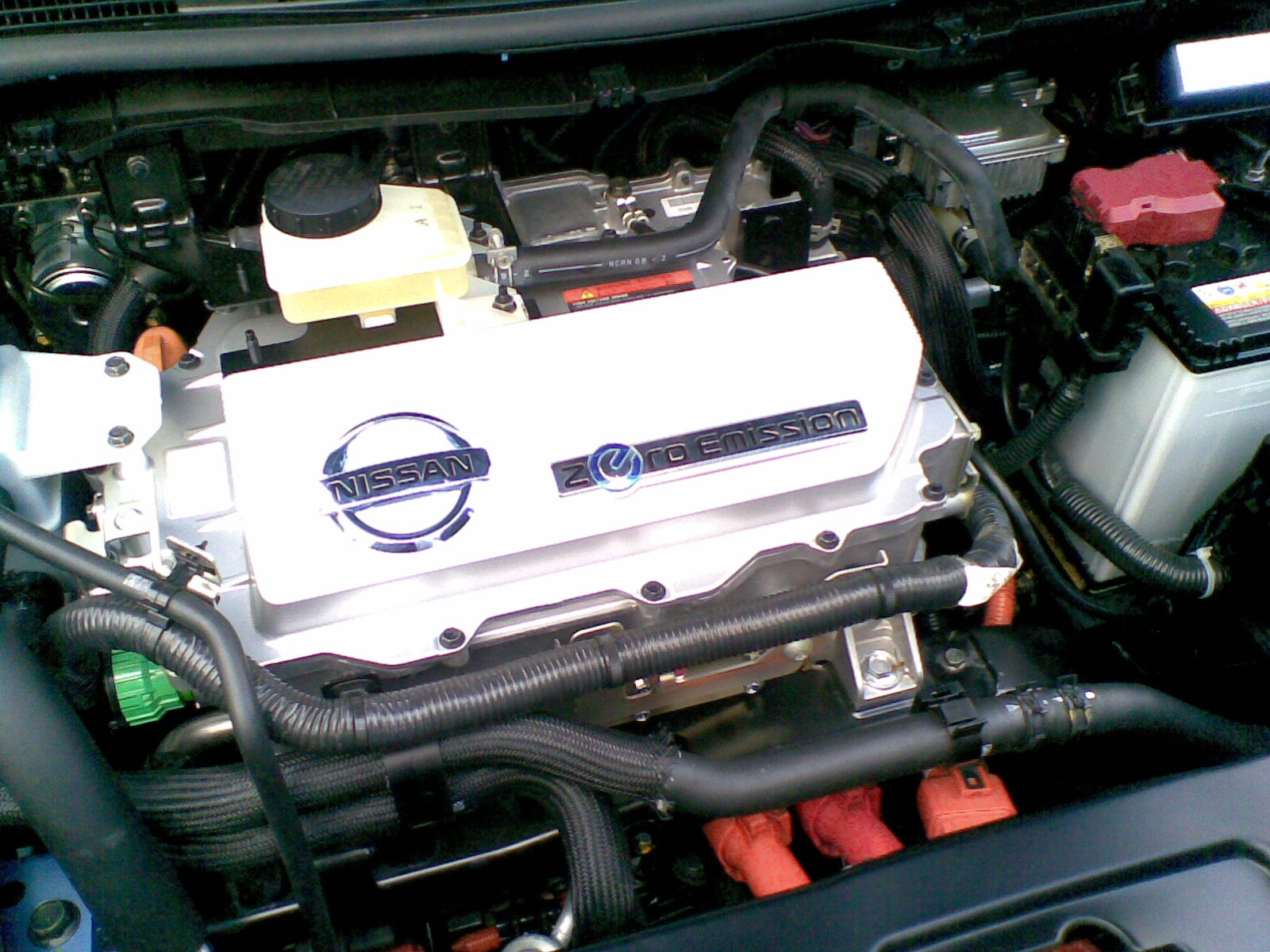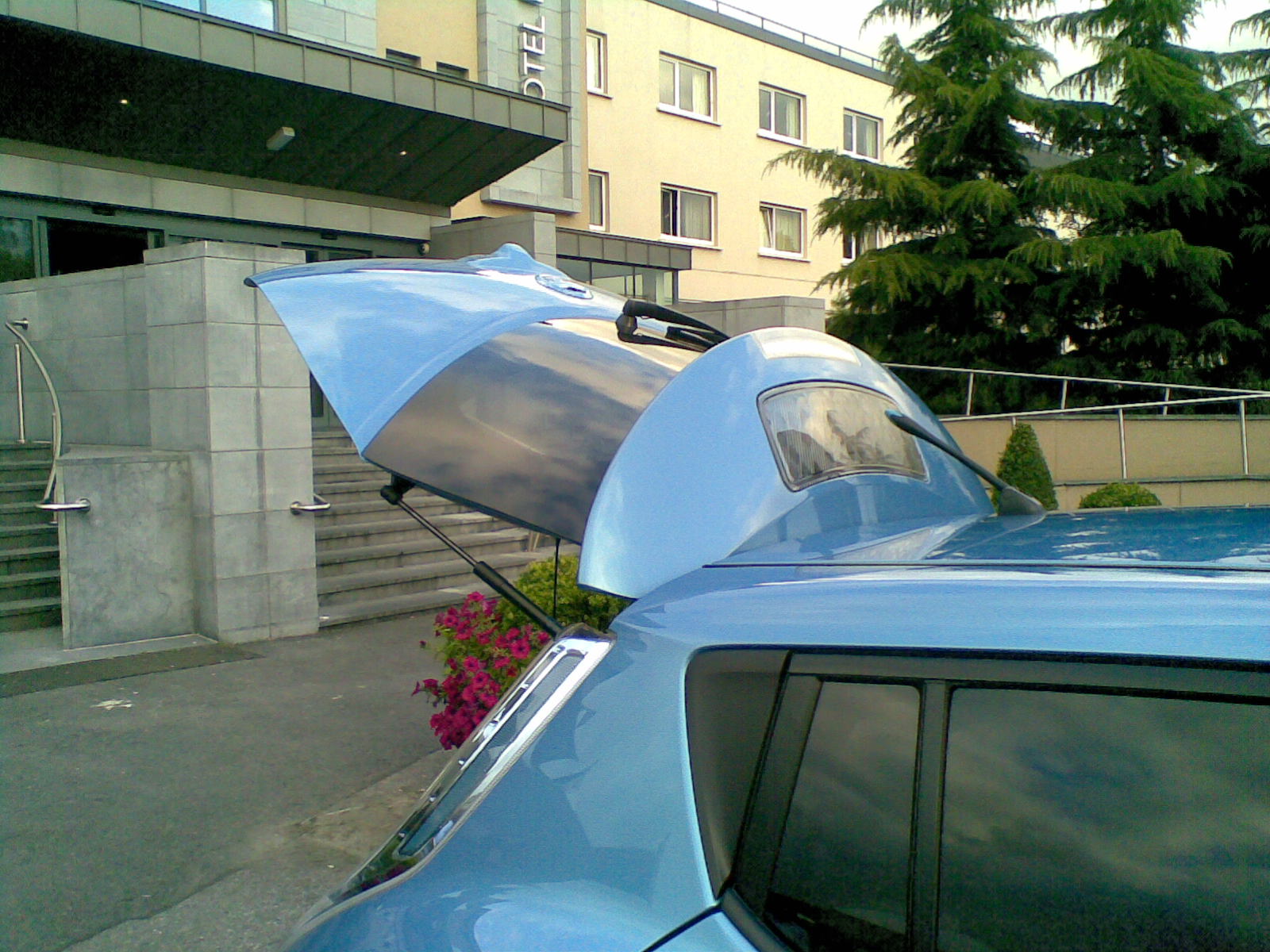Nissan have turned over a New LEAF!
We were invited to come along to the Nissan LEAF Roadshow in Kilkenny to test drive the world’s first affordable, mass produced electric car, the Nissan LEAF. This was one of only two in Europe and was a left hand drive version.

They were very sceptical, another electric bubble car, how would this one differ? Arriving at the Roadshow they were very surprised to see that the Nissan LEAF looked like a normal 5-seater family car, but this was no normal car. It is a car that runs on 100% electricity, a car with no fuel tank, no mechanically propelled engine and no exhaust pipe and is therefore a zero emissions car. Mechanics may not be over the moon about its arrival as it is the dawn of a new breed of vehicle that does not have the associated high service and maintenance costs that we have come to accept. In fact the average annual running costs for the Nissan LEAF, based on 12,000 miles or 19,200 kms, are expected to be in or around €232, or less than €20 per month. With the LEAF the standard service intervals of a normal car are a thing of the past with replacement tyres now probably being the biggest maintenance cost.

This is a sleek looking mid-size family car with a very eye catching appearance and a surprisingly spacious interior; four adult males were easily and comfortably accommodated. No key in the ignition, no clutch and no gear stick, just a press of a button and the car is started, but shut your eyes and you wouldn’t realise as the only indications are visual ones. The Nissan LEAF has the performance of a 1.6 litre petrol engine and is very quick and smooth in acceleration, it drives like an automatic but much more responsive and without the associated gear change shunts and roaring engine. Power is delivered via an 80kW a.c. motor that develops enough torque to reach a maximum speed of over 140 km/h. Acceleration from a standstill is very impressive indeed and the LEAF floats on seemingly effortlessly and silently. The LEAF is so silent that below 30km/h it emits an audible beep to alert unsuspecting pedestrians and cyclists of its presence.

The electric motor is powered by a bank of lithium-ion batteries that are mounted under the seats and floor of the LEAF thus giving a low centre of gravity and balanced weight distribution resulting in excellent handling and ride comfort. The latest generation lithium-ion batteries used in the LEAF are manufactured by Automotive Energy Supply Corporation (AESC), a joint venture company between Nissan and the Japanese electronics company NEC. These batteries are more efficient, more powerful and faster to recharge than anything gone before. The batteries can be recharged to 80% battery capacity in about 25 minutes from a fast charging point but the more normal method is a slower overnight charge. A full charge delivers a capacity of about 160kms but is very dependent on driving habits. The charging socket is under the Nissan badge just in front of the bonnet. ESB will install home charging points free of charge to the first 2,000 electric vehicle customers.


Under the bonnet Nissan have provided a mock engine but this space could have been put to better use. There is a standard 12V DC battery also to cater for starting and instrumentation on the dash, there is a small solar photovoltaic (PV) panel on top of the boot door that provides some level of recharge to the 12V battery. The boot is just adequate, certainly wont be carrying your full set of golf clubs in there. For a car with the latest generation lithium-ion batteries whose thinner structure and distribution around the vehicle allows for more room inside the vehicle itself, it is a pity that the lack of a conventional engine does not mean pucks of cargo space as well. But this is the only real negative in what is otherwise a breath of fresh air to the automotive industry and a real credit to Nissan.


The Nissan LEAF that will be available in Ireland will come fully equipped with features such as 16” Alloy Wheels, fully automatic Climate Control, Satellite Navigation that doubles up as a screen for the Rear Parking Camera, Cruise Control and a quick charge socket. Safety equipment such as Driver, Passenger, Side and Curtain airbags will be standard along with Electronic Stability Control. Equipment will also include the very distinctive LED headlamps which is a first for Nissan.
According to Nissan innovative smart phone connectivity will allow an owner to control many elements of the LEAF’s functions remotely, including telling the car when to re-charge, to heat or cool the interior of the car before starting a journey and many more innovative features. The Satellite Navigation on the LEAF can connect directly to a Global Data Centre via the Telematics System giving owners updates on charging points, driving patterns and so on.

Road tax is €104 per year but should these state of the art zero-emissions vehicles be exempt from road tax?
Nissan have certainly set the bar extremely high indeed and for this they must be applauded. The LEAF is certainly suited to city driving and low mileage driving but as technological advances extends the range of these vehicles they will become the vehicle of choice for all types of customers.

Thanks to Liam Martin, Wexford Car Centre for the invitation to test drive this great piece of technology. It was a truly unexpected surprise. Test drive the LEAF at a branch near you!
All photographs copyright of Eco Evolution


















